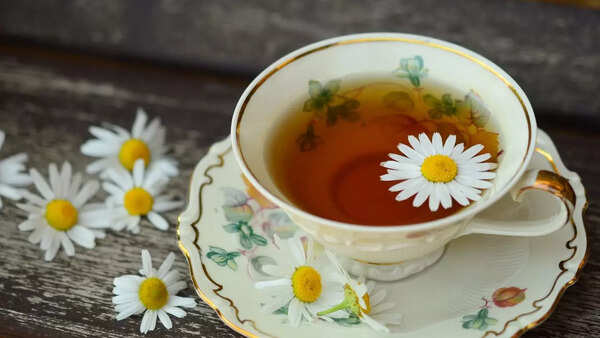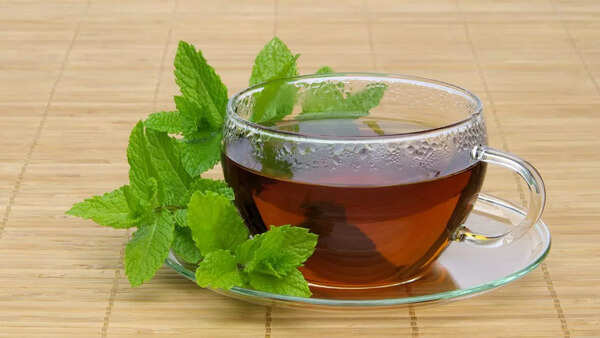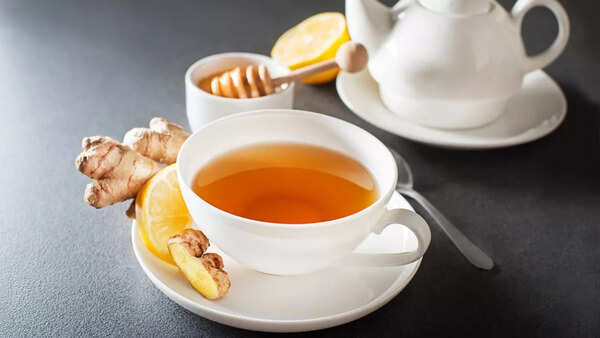Menstrual cramps can significantly disrupt daily life, causing pain and exhaustion. While hot water bottles and painkillers offer temporary relief, they might not be sufficient in the long run. For centuries, women have turned to herbal teas to alleviate menstrual discomfort. Discover five ancient herbal teas known for their pain-relieving properties.


Brewing red raspberry leaf tea can provide relief from menstrual cramps. This tea, made from the leaves of raspberry plants, has a mild taste similar to black tea. The leaves contain fragarine, a compound believed to strengthen pelvic muscles and reduce uterine spasms, which can significantly ease menstrual pain.
To prepare, add 1–2 teaspoons of dried leaves to hot water and let it steep for 10 minutes.

Chamomile tea, a star in ancient Egypt and Rome for its calming effects, is also a popular choice for menstrual relief. Its anti-inflammatory and antispasmodic compounds, such as apigenin, aid in relaxing muscles and reducing cramping. While it may not directly target menstrual cramps, chamomile tea can improve sleep quality and reduce fatigue, and the antioxidants may help reduce inflammation.

Used since ancient Greece, peppermint tea contains menthol, a natural muscle relaxant. This cooling compound can help soothe uterine contractions and ease cramps. A 2019 study indicated that menthol in peppermint oil smooths muscle spasms, reducing painful stomach cramps.
To prepare, steep 1 teaspoon of dried peppermint leaves in hot water for 5–10 minutes. This tea can also improve digestion and reduce bloating.

Craving something sweet during menstruation? Cinnamon tea can satisfy that craving while easing pain. Its naturally sweet and spicy flavor provides a comforting and relaxing drink. A staple in ancient Chinese and Ayurvedic medicine, cinnamon has anti-inflammatory and circulation-boosting properties. It helps reduce menstrual pain by improving blood flow and relaxing uterine muscles.
A 2020 study revealed that cinnamon supplementation can reduce inflammation and oxidative stress levels. Consume in moderation to avoid overstimulation.

The reliable ginger tea is a classic choice. Used in Asian and Indian healing practices for its potent anti-inflammatory properties, this spicy root contains gingerol, which may reduce prostaglandin levels that trigger menstrual cramps.
A 2015 study found that women who consumed 750-2000 mg of ginger powder during the first 3-4 days of their period experienced reduced period pain.
Disclaimer: This article is for informational purposes only and is not a substitute for professional medical advice. Consult a healthcare provider before starting any new dietary or herbal remedy, especially if you are pregnant, nursing, taking medications, or have existing health conditions.
Newer articles
Older articles
 Stokes Credits Opening Duo for England's Stunning Chase Against India
Stokes Credits Opening Duo for England's Stunning Chase Against India
 India's Dengue Vaccine Inches Closer to Reality as Phase 3 Trials Approach Finish Line
India's Dengue Vaccine Inches Closer to Reality as Phase 3 Trials Approach Finish Line
 Rishabh Pant's Explosive Batting Revolutionizing Cricket, Says Greg Chappell
Rishabh Pant's Explosive Batting Revolutionizing Cricket, Says Greg Chappell
 Blackcaps Gear Up for Blockbuster Home Summer Against Cricket Heavyweights
Blackcaps Gear Up for Blockbuster Home Summer Against Cricket Heavyweights
 India's Test Defeat: Former Selector Blames Fielding Errors, Urges Patience with Transitioning Team
India's Test Defeat: Former Selector Blames Fielding Errors, Urges Patience with Transitioning Team
 Steve Smith Eyes Grenada Test Return After Injury Layoff
Steve Smith Eyes Grenada Test Return After Injury Layoff
 Sri Lanka's Fielding Masterclass Propels ODI Victory Over Bangladesh, Hasaranga Lauds Team Effort
Sri Lanka's Fielding Masterclass Propels ODI Victory Over Bangladesh, Hasaranga Lauds Team Effort
 7 Telltale Signs Your Partner May Be Commitment-Phobe
7 Telltale Signs Your Partner May Be Commitment-Phobe
 Woakes Voices Frustration as Close DRS Calls Haunt England Against India at Edgbaston
Woakes Voices Frustration as Close DRS Calls Haunt England Against India at Edgbaston
 Ancient Remedies: 5 Herbal Teas for Menstrual Cramp Relief
Ancient Remedies: 5 Herbal Teas for Menstrual Cramp Relief